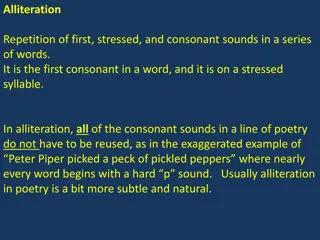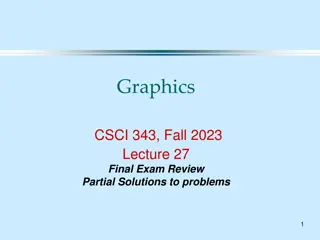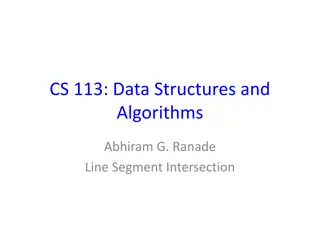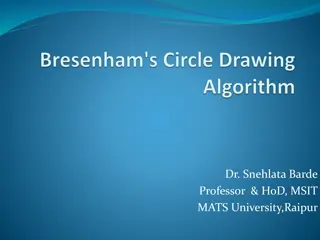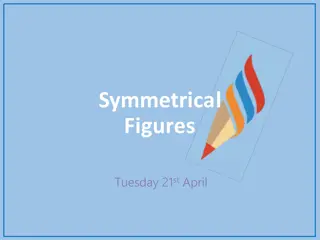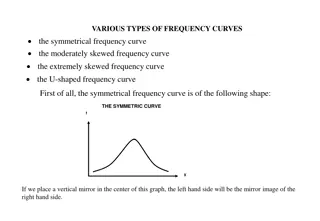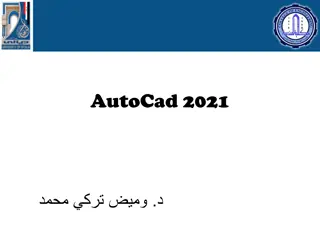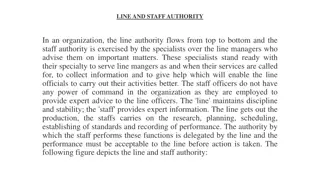Understanding Symmetrical DDA and Bresenham's Line Drawing Algorithm
The content discusses the Symmetrical DDA (Digital Differential Analyzer) and Bresenham's Algorithm for line drawing in computer graphics. Symmetrical DDA generates lines from differential equations, while Bresenham's Algorithm iteratively changes coordinate values to draw lines effectively. The process involves deriving x and y values, detecting changes to avoid plotting the same point twice, and handling errors to ensure accurate line drawing.
Download Presentation

Please find below an Image/Link to download the presentation.
The content on the website is provided AS IS for your information and personal use only. It may not be sold, licensed, or shared on other websites without obtaining consent from the author. Download presentation by click this link. If you encounter any issues during the download, it is possible that the publisher has removed the file from their server.
E N D
Presentation Transcript
COMPUTER GRAPHICS S.JOSEPHINE THERESA, DEPT OF CS, SJC, TRICHY-2
CONTENTS SYMMETRICAL DDA Bresenhams Algorithm Algorithm Method
The Symmetrical DDA Digital differential Analyzer Generates line from their differential equations To build DDA to draw curves as well as straight lines provided these curves can be defined by ordinary differential equations dy/dx = y/ x
Steps 1. First derivates x and y 2. In case of straight line first derivates constant and propotional to x and y 3. An infinite precision displays we could generate a line incrementing x and y e x and e y. 4.X and y are kept in registers.Registers have two parts integer and fractional
Continuation The incrementing values which are both less than unity are repeatedly added to the fractional parts and whenever the results overflows the corresponding integer part is incremented Fractional parts to achieve rounding(0.5) value we use DDA
One advantage of this arrangement , it allows us to detect changes in x and y and hence to avoid plotting the same point twice. The overflow indicator generated by the DDA produce the signals we need to reposition the point that trace out the line Symmetrical DDA 2n-1<=max(| x| | y|) <2 n
Bresenhams Algorithm Line drawing algorithm was developed by bresenhams Each iterations changes one of the coordinate values +-1 The other coordinate may or may not change depending on the value of an error term maintained by the algorithm
The error term record the distance measured perpendicular to the axis of greatest movement between the exact path of the line and the actual dots generated At each iteration of the algorithm the slope of the line y/ x is added to the error term A positive e value indicates that the exact path of the line lies above the current point Therefore the y coordinate is incremented and 1 is subtracted from e If e is negative the y coordinate value is left unchanged
Algorithm e is real; x,y, deltax, delta y are integers E:= deltay/deltax) -0.5 For i=1 to deltax do begin Plot (x,y) If e > 0 then begin Y=y+1; E= e-1; End X=x+1; E=e+(deltay/deltax); end;
Continuation. ADVANTAGES: It is used only integer arithmetic Avoids generating duplicate points It also avoids multiplication and divisions It is well suited to implementation in hardware or simple microprocessors





